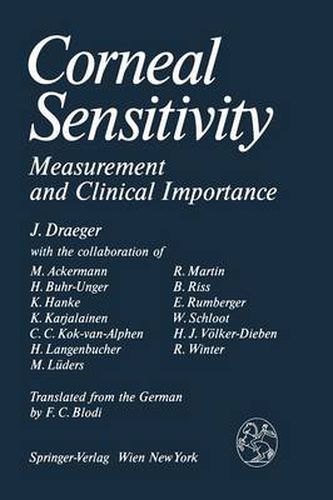Readings Newsletter
Become a Readings Member to make your shopping experience even easier.
Sign in or sign up for free!
You’re not far away from qualifying for FREE standard shipping within Australia
You’ve qualified for FREE standard shipping within Australia
The cart is loading…






This title is printed to order. This book may have been self-published. If so, we cannot guarantee the quality of the content. In the main most books will have gone through the editing process however some may not. We therefore suggest that you be aware of this before ordering this book. If in doubt check either the author or publisher’s details as we are unable to accept any returns unless they are faulty. Please contact us if you have any questions.
We in ophthalmology are fortunate to be able to measure quantitatively many aspects of ocular morphology and visual function. These measurements are either objective (e. g. electroretinography, tonometry, electromyography, visually evoked responses, etc.) or subjective and psychophysical (e. g. visual acuity, visual fields, color vision, etc.). One aspect of corneal physiology and pathology which has so far escaped careful and reliable measurements is corneal sensitivity. Previous attempts have been rather crude and can be compared to measuring intraocular pressure by digital compression. Professor Draeger has for the last decade and a half directed his attention to the question of esthesiometry of the cornea. He has a gift for constructing and devising new ingenious ocular instruments. His handheld tonometer is a splendid example. He has now applied the principle of this instrument to the new electronic optical esthesiometer. In many publications he has reported on his first results using this modern technique to study corneal physiology and evaluate certain pathologic conditions. In this monograph Professor Draeger has collected all of his material and reports on his long experience. The usefulness of this instrument is just beginning to be appreciated. It is obvious that this new measuring device will help us in the fitting of contact lenses, evaluating herpes simplex infections of the cornea, follow the postoperative course of patients with a penetrating keratoplasty, etc.
$9.00 standard shipping within Australia
FREE standard shipping within Australia for orders over $100.00
Express & International shipping calculated at checkout
This title is printed to order. This book may have been self-published. If so, we cannot guarantee the quality of the content. In the main most books will have gone through the editing process however some may not. We therefore suggest that you be aware of this before ordering this book. If in doubt check either the author or publisher’s details as we are unable to accept any returns unless they are faulty. Please contact us if you have any questions.
We in ophthalmology are fortunate to be able to measure quantitatively many aspects of ocular morphology and visual function. These measurements are either objective (e. g. electroretinography, tonometry, electromyography, visually evoked responses, etc.) or subjective and psychophysical (e. g. visual acuity, visual fields, color vision, etc.). One aspect of corneal physiology and pathology which has so far escaped careful and reliable measurements is corneal sensitivity. Previous attempts have been rather crude and can be compared to measuring intraocular pressure by digital compression. Professor Draeger has for the last decade and a half directed his attention to the question of esthesiometry of the cornea. He has a gift for constructing and devising new ingenious ocular instruments. His handheld tonometer is a splendid example. He has now applied the principle of this instrument to the new electronic optical esthesiometer. In many publications he has reported on his first results using this modern technique to study corneal physiology and evaluate certain pathologic conditions. In this monograph Professor Draeger has collected all of his material and reports on his long experience. The usefulness of this instrument is just beginning to be appreciated. It is obvious that this new measuring device will help us in the fitting of contact lenses, evaluating herpes simplex infections of the cornea, follow the postoperative course of patients with a penetrating keratoplasty, etc.